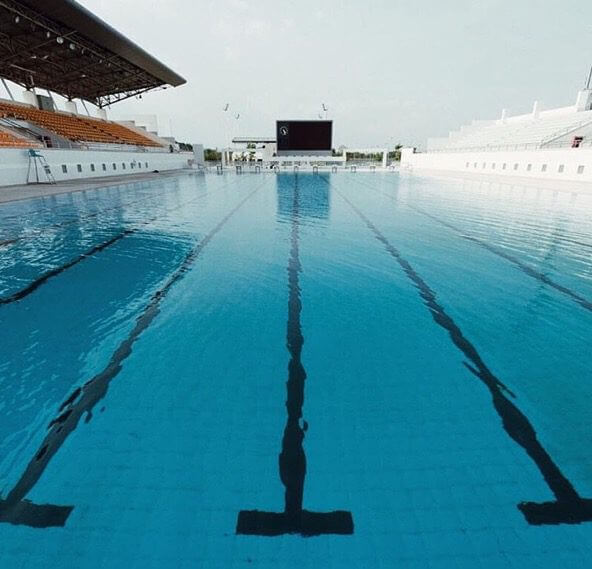5 Tips for Long Course Swimming

5 Tips for Long Course Swimming
For the most part, summer is every young swimmer’s dream.
Beautiful, sunny swim meets, post-practice ice cream, and fun await swimmers who dedicate their summer to the sport. There’s a relaxation to the summer, especially compared to the rigidity of the competitive winter season.
So why don’t more swimmers participate over the summer? The answer lies in two words: long course.
The fear of the 50-meter pool discourages some club swimmers from competing year-round. But after you get past the pool’s daunting length, the long course season can be an incredibly rewarding experience for swimmers. If done right, it’s two months of excitement that will give you a leg up on the competition in the winter.
Here are some tips for making the most of your long course season and, therefore, your summer.
Underwaters!
A common narrative around long-course swimming is that underwaters are less valuable. With half the amount of turns as a 25-yard race, it’s easy to understand why. Swimmers believe that since they only have to do half the amount of underwaters as a 25-yard race, they’re less important. THIS COULD NOT BE MORE WRONG.
Underwaters are arguably even more important in long-course swimming, due to their scarcity. Especially early in the long course season, adjusting to the length of the pool can be difficult. Underwaters give the swimmer a break from this stress, lowering their stroke count as they acclimate to the bigger pool.
Emphasizing underwaters during hard sets at practice is the easiest way to improve them. Start with one more kick than you normally would, then build from there. Through hammering the concept during the most difficult swims, you’ll improve in a valuable area.
Focus on the Middle Third
When swimming a long-course race, it’s easy to go fast in between the flags. The length of the pool makes it impossible to see the wall for long stretches, leading swimmers to often swim faster in this area. The mere sight of the finish line changes everything.
But what about the middle of the pool? Especially in longer races, swimmers often get lost in the “middle third” of the pool, taking it too easy due to the monotonous nature of the race. This third of the pool, however, is essential. The middle can make or break any race, as it’s where most of the difficult swimming occurs.
Practicing staying focused throughout a long aerobic set, or a long race at practice, is great preparation for the “middle third.” Ensure your intensity stays consistent throughout the entire swim, even if you’re attempting to “pace.” Strong, controlled swimming throughout the whole race will make you stand out among the rest.
Don’t Copy Your Short-Course Race Strategy For Longer Events
For shorter events, long-course swimming remains pretty similar to short-course swimming. At the end of the day, a 50 freestyle or a 100 butterfly will still be a mad dash to the wall. It’s longer events in which a serious difference can be seen.
Long-distance races take significantly more endurance than short-distance races. This makes it almost impossible, especially early in the long course season, to simply copy your strategy from the short course version of the race.
Experiment during practices and meet warmup with different paces and race strategies. Your strategy may even evolve, as you become more conditioned to the pool. The more prepared you are for the long course version, specifically, the better your race will be.
Don’t Compare Times Between Courses
This may be the hardest tip to accomplish.
It’s natural to stress about comparing your long course times to your short course times. So much of swimming is about achieving best times, and long course represents another opportunity to do so.
However, the two courses are almost impossible to compare. Some swimmers will be better at long course, due to being better swimmers in the middle of the pool. Others may be reliant on turns and underwaters, making them better short-course swimmers.
Focus on bettering yourself within your season. A long course best time and a short course best time are both very valuable. Treating them as such will make you a happier, healthier swimmer.
Stay Positive
Although long-course practices and swims can be grueling, they provide immense benefits. You’ll begin the winter season in fantastic shape, potentially get to swim outdoors during the beautiful summer, and create lots of new memories with friends. Give the long course season a chance, and it’ll surely pay off!



